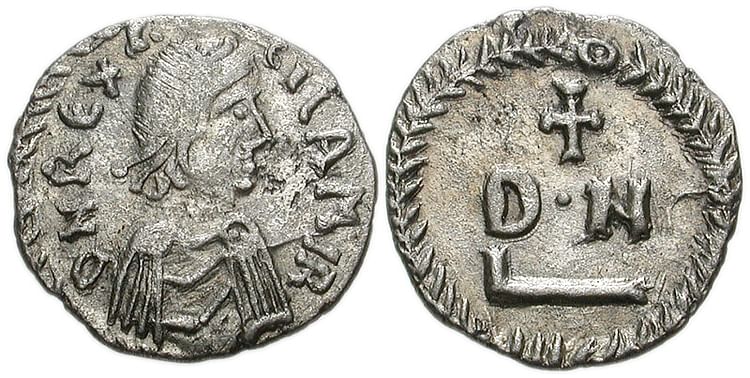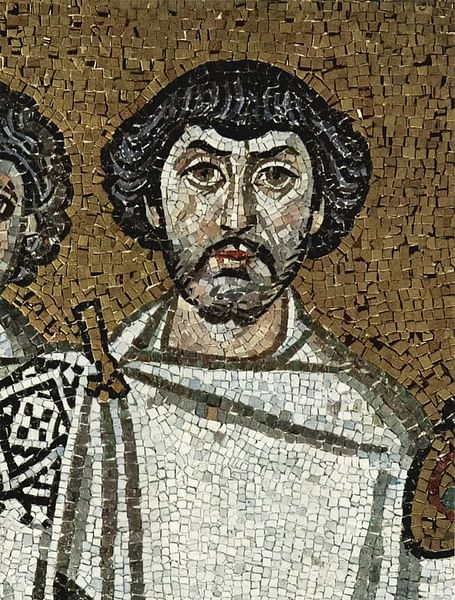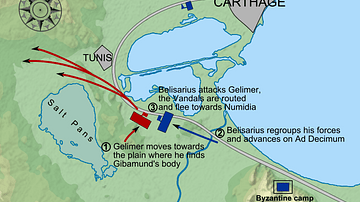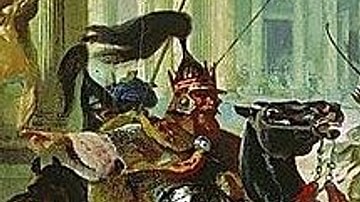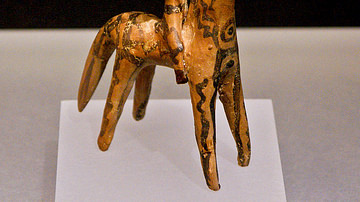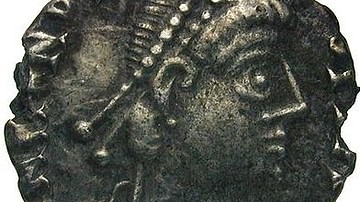The Battle of Tricamarum (533 CE) was the second and last major battle of the Vandalic War (533 – 534 CE). The battle was fought between the forces of the Byzantine Empire under the leadership of the general Belisarius (500 – 565 CE) and the king of the Vandals Gelimer (480 – 550 CE). This conflict took place directly west, approximately 50 km, of the Byzantine-occupied Vandal capital of Carthage. The Battle of Tricamarum takes place several months after the Battle of Ad Decimum (533 CE), where Belisarius defeated Gelimer and routed a large portion of the Vandal army. The Battle of Tricamarum would further destabilize the rule of Gelimer within the Vandal Kingdom and within a year lead to the subjugation of the Vandals by the Byzantines. This subjugation would allow the Byzantines to fully reincorporate North Africa as a province within the Byzantine Empire and give Belisarius a staging ground to prepare for his reconquest of Sicily and Italy.
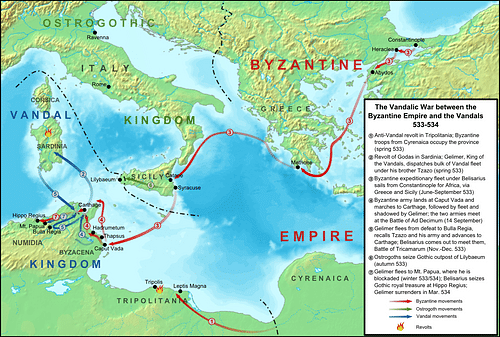
Prologue
Having recently been defeated at Ad Decimum Gelimer was in a very difficult position. Gelimer knew that currently, he did not have the manpower to face Belisarius in the field. The Vandal king began growing his forces by dispatching messengers to his brother Tzazon (d. 533 CE), who had recently successfully subdued a Byzantine-funded revolt in Sardinia. Gelimer asked Trazon to return with his army to help face the Byzantine invasion. Meanwhile, Gelimer sought to replenish his forces by bribing many of the local farmers within the region to fight as mercenaries. Gradually many locals joined Gelimer's army and Tzazon returned with his own force so that Gelimer was now confident enough to again seek battle with Belisarius. Gelimer would advance on Belisarius, who still occupied well-fortified Carthage, and attempt to force a pitched battle. Belisarius, not wanting to face a siege and to capitalize on the momentum gained from his previous victory, sent out his cavalry first to skirmish with the Vandals. The Byzantine infantry would follow behind the advance force of cavalry as they made their way towards the site of the battle. This battle would take place west of Carthage, centered around a small stream at Tricamarum.
The Battle
The Byzantine advance force of cavalry, under the command of Belisarius's trusted subordinate commander John the Armenian, arrived at the site far before any other Byzantine commander did. John and his cavalry set about making camp in preparation for Belisarius and the remainder of the Byzantine forces to arrive. Gelimer and his army had spent the previous night's fortifying their own camp. The following morning Gelimer forced an engagement before Belisarius arrived by deploying his army in battle formations. Gelimer chose his time of deployment strategically at just before noon. It was a well-known fact that the Byzantines typically ate their lunch at noon so perhaps Gelimer was attempting to force the Byzantines to fight on an empty stomach. Similar tactics were employed by the Persians extensively in their many engagements with the Byzantines.
The Byzantines, still under John's command, were deployed rapidly in response to the threat posed by Gelimer. Before any real combat took place Belisarius and his household cavalry, the bucellarii, arrived on the field to join with John. Belisarius decided to allow John to retain overall command of the Byzantine forces for this engagement. This was because John was the first commander there and thus had a far better understanding of the current situation.
After the Byzantines and Vandals formed their armies opposite each other they both waited to see which army would make the opening move. Unlike at Ad Decimum, the Vandal battle-plan was designed to force the Byzantines to open the attack. Seeing this, the Byzantines developed a plan to entice the Vandals into charging across the small stream to break up their cohesion and thus be easier to destroy. John, presumably under Belisarius's guidance, ordered skirmishing soldiers forward in order to lure the Vandals into a charge. The skirmishers crossed the stream and fired arrows at the Vandal center who were under the command of Tzazon. Tzazon and his soldiers charged at the skirmishers to force them back over the stream but they themselves maintained their discipline and did not take the bait laid by the Byzantines. Seeing that the first attack by the skirmishing soldiers nearly accomplished the Byzantine plan, John lead a second charge threatening the Vandal center. Much like the first charge, John and his soldiers were forced to withdraw due to a controlled charge by the Vandal center.
At this point however, John and/or Belisarius noticed that during each charge by the Vandal center the flanks of the Vandal army remained stationary. The flanks were not supporting the center at all during their counter-charge against the Byzantines. Seeing this, John lead a large charge that included the bucellarii, and much of the most experienced Byzantine cavalry into the center of the Vandal line. John and his men were able to kill Tzazon and rout the Vandal center completely under the weight of their cavalry charge.
Seeing the center routed completely and Tzazon killed destroyed Gelimer's morale in a very similar manner to what had happened at Ad Decimum. Under this pressure Gelimer ordered a full retreat to the Vandal fortified camp. The Byzantines pursued the Vandals back towards their camp but could not launch an actual attack onto the camp itself. After this engagement, Procopius states that the Byzantines left no more than 50 men dead while over 800 of the Vandals were killed.
Later in the day, after the first engagement at the stream, the Byzantine infantry arrived on the field. Belisarius and John now had the means to assault the Vandal camp. Gelimer however, had no intention of fighting it out and had fled unnoticed by his army with only a few servants. When this knowledge came to light the remainder of the Vandal army fled rather than face the Byzantine attack. The Byzantine army advanced into the camp to discover these events and the now empty camp. The Battle of Tricamarum had ended with Belisarius and the Byzantine army having again thoroughly routed the Vandals and Gelimer.
Aftermath
With Gelimer now thoroughly defeated for a second time by the Byzantines the Vandal king knew he was in a very precarious position. Gelimer retreated into the desert towards the city of Hippo Regius. Soon, though, he was discovered by a Byzantine force under the command of a man named Pharas who laid siege to the city. After several weeks of besiegement Gelimer finally formally surrendered under the condition he and his men would be spared. The captured Gelimer would be displayed during a Roman Triumph, one of the last ever granted, for the people of Constantinople. The Byzantines had landed in September of 533 CE and with Gelimer's formal surrender in March of 534 CE the Vandalic War was over. Belisarius would go on to consolidate his forces and continue his campaigns of reconquest in Sicily and Italy, achieving great successes there.
